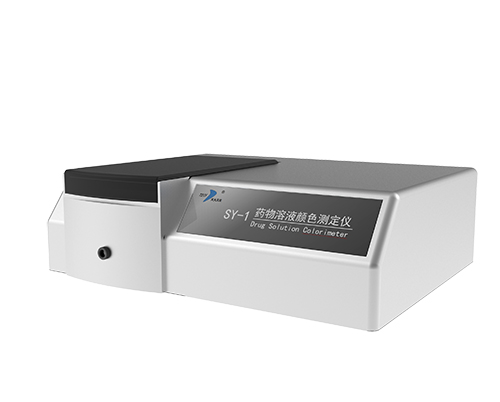Operation of SY-1 Drug Solution Color Tester

The SY-1 drug solution color meter uses the principle of spectral measurement, is equipped with exclusive color measurement software and a database of pharmacopoeia standard colorimetric solutions, and can accurately measure the color of drug solutions. It is widely used in the field of drug quality control.

The operating steps of SY-1 drug solution colorimeter are as follows:
1. **Preparation**:
- Ensure that the instrument is placed on a stable workbench, the ambient temperature is between 0℃-45℃, the relative humidity is ≤80%, and there is no condensation.
- Connect the power cord, turn on the instrument switch, and let the instrument preheat for a period of time to stabilize the light source and ensure the accuracy of the measurement.
- Prepare a clean and uncontaminated 1.5ml cuvette, and ensure that the cuvette has good light transmittance.
- Prepare the drug solution to be tested. The solution should be clear and transparent without obvious impurities and bubbles.
2. **Calibration operation**:
- Align the measuring port of the instrument with the black calibration plate, press the corresponding calibration button or click the calibration option in the software to perform black calibration to eliminate the influence of background light.
- Then align the measuring port with the white calibration plate and perform white calibration to calibrate the light source intensity of the instrument and the response of the detector to ensure the accuracy and stability of the measurement.
3. **Measurement sample**:
- Take an appropriate amount of the drug solution to be tested and pour it into the cuvette. Be careful to avoid splashing or overflowing the solution. The amount of solution should be enough to cover the bottom of the cuvette, but not exceed the capacity of the cuvette.
- Place the cuvette containing the sample solution into the measuring hole of the instrument, ensuring that the cuvette is placed stably and the light path passes through the center of the solution.
- Open the color measurement software that comes with the instrument on the computer, click the measurement button or select the corresponding measurement command, and the instrument starts to measure the color of the sample solution.
4. **Data reading and analysis**:
After the measurement is completed, the computer software interface will display the chromaticity coordinate value of the sample, the specific position in the three-dimensional chromaticity space, the color deviation compared with the standard colorimetric solution, and other information. It will also give the closest hue and color number of the sample in the standard colorimetric solution of the Chinese Pharmacopoeia. Operators can evaluate and analyze the color of the sample solution based on these data to determine whether it meets the quality standards.
5. **Cleaning and shutdown**:
- Take out the cuvette, pour out the solution, rinse it with deionized water, and dry it with a clean paper towel. Store the cuvette properly for next use.
- Turn off the instrument power, unplug the power cord, and properly clean and maintain the instrument, such as wiping dust off the surface of the instrument.
Technical parameters:
Lighting mode: 0/0 (vertical irradiation, vertical reception)
Observer angle: 2°/10°
Measurement wavelength range: 400~700nm
Wavelength interval: 10nm
Sensor: Dual optical path array sensor
Measurement aperture: about 10mm
Color measurement liquid addition amount: not less than 1.5ml
Measurement time: 0.5 seconds
Measurement interval time: 2 seconds
Absolute error of measuring the three stimulus values X, Y, Z of pure water: ≤0.1
2024-12-27 12:03

